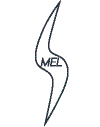MOLCAR_UA
Optimization of functional properties of materials for current collectors/biopolar plates of molten carbonate fuel cells
Grant agreement number: FWD/III/121/MOLCAR_UA/2022
Acronim: MOLCAR_UA
Dates of eligibility: 31.12.2022-31.12.2023
The total cost of Project implementation: 95 926,92 PLN
Project leader: Prof. Jarosław Milewski, Institute of Heat Engineering, Warsaw University of Technology
Ukrainian Researcher: Dr. Wiktoria Podhurska, Karpenko Physico-Mechanical Institute of the NASU
Project description:
A fuel cell is an electrochemical device for generating electrical energy by electrochemically oxidizing a fuel gas (usually containing hydrogen). Individual fuel cells are connected via current collectors/bipolar plates to form fuel cell stacks. The current collectors/bipolar plates provide pathways for gas flow into and out of the fuel cell and divert electrical current from the fuel cells. Efficient current collectors/bipolar plates must be gas-tight to prevent the mixing of the oxidizer on one side with the fuel on the other side; they must be highly electrically conductive to allow electrical current to flow out of the fuel cell at low contact resistance at the bipolar plate /electrode interface.
Nowadays, fuel cell current collectors/bipolar plates are traditionally made of sheets (0.3…0.5 mm thick) of stainless steels, which contain 20…24% Cr, as they exhibit acceptable oxidation resistance and electrical conductivity of a surface layer in an operating environment, as well as suitable thermal expansion coefficient and relatively low price. However, it is known that due to the diffusion of chromium from the bipolar plate to the cathode, functional properties of the bipolar plate deteriorate. Due to oxidation, the surface electrical conductivity of such a bipolar plate is lost. This requires the creation of special coatings on their surface.
The aim of the Action is to develop effective functional layers on stainless steel, obtained by the physical vapor deposition (PVD) method, with high electrical conductivity and oxidation resistance. Continuous and uniform PVD coatings can effectively prevent further electrochemical corrosion and dissolution of stainless steel. Cr2N and Cr2N/Ni coatings are considered as promising coating materials due to their excellent corrosion resistance and high metal-like electrical conductivity. Such functional layers on stainless steel substrate provide good electrochemical performance in the fuel cell environment.
The contact resistance of the connections has a high impact on the durability and reliability of complex electrical systems. Bad contacts are the cause of the failure or poor performance in a wide variety of electrical devices. Contact resistance between gas diffusion layer and bipolar plate plays a dominant role in the performance of a fuel cell. This is a complex issue determined by many factors, such as the material properties, surface topography, clamping pressure, temperature, and fabricated features of components. On the other hand, numerical methods have been adopted to predict contact resistance. Mathematics models were also developed to predict contact resistance.
However, only a few experimental studies on contact resistance between the gas diffusion layer and bipolar plate have been carried out, and it has been typically estimated roughly or simply overlooked in modeling studies. Therefore, the second aim of this Action is to investigate the effects of the temperature, clamping force, and functional layers on the bipolar plate, on contact resistance between the bipolar plate and gas diffusion layer and to provide reliable data for modelers.
The Project co-funded from the Norwegian Financial Mechanism (Norway Grants) 2014-2021 via the National Centre of Research and Development. Programme: Support for Ukrainian researchers under Bilateral Fund of ‘Applied Research’
For more information on the Programme, please visit:
The 24th Conference on Material Science, YUCOMAT 2023, 03-09 September, Montenegro
A study of long-term oxidation resistance and its mechanism in films based on CrN deposited on 16-18%Cr steel Viktoriya Podhurska, Yaroslaw Milewski , Oleksander Kuprin and Pavel Shuhayeu
International Young Scientists Conference on Materials Science and Surface Engineering MSSE–2023, Lviv, Ukraine
DEVELOPMENT OF PROTECTIVE COATING FOR MOLTEN CARBONATE FUEL CELL CURRENT COLLECTOR
Viktoriya Podhurska, Pavel Shuhayeu, Oleksander Kuprin, Jaroslav Milewski
24th International Conference “New Cryogenic and Isotope Technologies for Energy and Environment"- EnergEn 2023, Băile Govora, Romania
Bipolar plates and current collectors are metallic components for commercial MCFC stacks. For commercial MCFC systems, up to 55 % of the material content could be the metallic hardware (for the complete system). The stability in a corrosive carbonate atmosphere at high temperature, good electrical conductivity and low contact resistance with the electrodes are desired characteristics of bipolar plates and current collectors. Stainless steels like 310 S (24–26 wt. % Cr) and 304 L (16–18 wt. % Cr) have emerged as materials of choice for MCFC hardware. However, the hot corrosion in the presence of the carbonate melt is a critical issue with these materials for long-term operation. One of the methods of protecting and improving the corrosion properties of steel is the application of coatings based on nitrides. The corrosion resistance of Cr-N coatings is better than that of stainless steel and other nitride coatings in the high temperature pressurized water and the oxidation rate in air at 600/800°С is low. One of the most commonly deposition technique used is cathodic arc evaporation due to excellent characteristics of the coatings. The coatings are characterized by high hardness, good adhesion to the substrate, high density, homogeneity.



